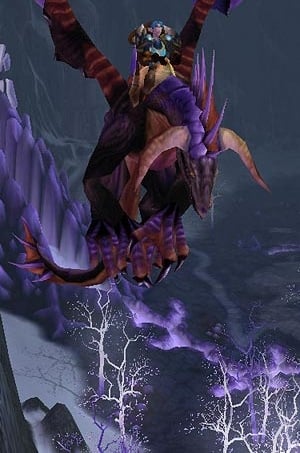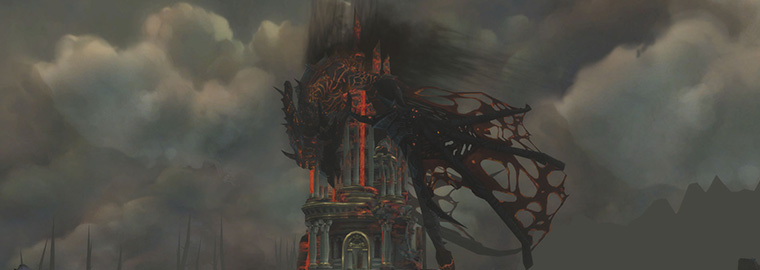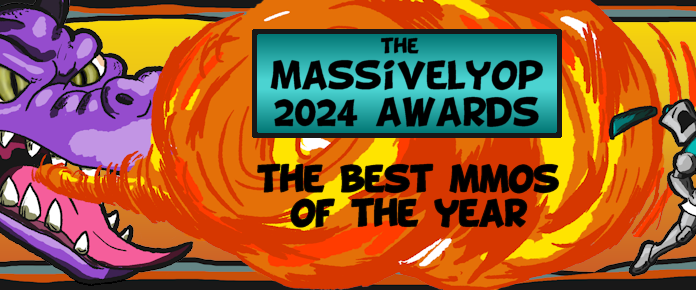
Editor’s note: We’re sorry to report that Eliot appears to have fallen through some sort of wormhole when this column was due. Maybe a portal; it’s hard to be sure. We would go look for him, but he’s a big guy and can probably take care of himself. Heck, he’s probably back already as if nothing ever happened by the time you’re reading this, and even if he’s not, we’re pretty sure it’s fine.
His unexpected portal trip did leave us without a column today, but fortunately, due to convoluted events that don’t make a whole lot of sense, we were able to use the same portal-thingy to steal an alternate Eliot’s column about the history of World of Warcraft that is probably very similar to our own history. Or not. The point is that it’s legible and we’ve got something to read. Have fun!
 Here we are, knee-deep in the waiting period before the next World of Warcraft expansion, and I have to admit that I’m really looking forward to Deathwing torching the world.
Here we are, knee-deep in the waiting period before the next World of Warcraft expansion, and I have to admit that I’m really looking forward to Deathwing torching the world.
We know that the plans for Cataclysm have been rumbling along for a while; back when Wrath of the Lich King was wrapping up, the design teams had two expansion options, and they went for the full-scale demonic invasion of Legion. At the time, I was a bit wary of it simply because it seemed like it risked shoving all of the game’s good ideas out of the door in one burst. First we dealt with the Lich King, then with the Legion? Who’s going to be left to fight?
Legion, ultimately, was a transformative expansion in a lot of ways. For one thing, it stepped up the game from WOTLK by adding not one but two new classes. Demon Hunters took off pretty quickly, but Bards struggled until they were unshackled from the guitar peripheral toward the end of the expansion cycle. It makes Warhammer Online‘s addition of the Metal Thrasher class with additional vocal, drumming, and bass peripherals seem even more inexplicable, but that’s another story altogether.
More importantly was Legion‘s addition of yet another raid mode with the five-person size, which seemed to have its heart in the right place, but the execution was lacking. Being able to just queue up for a five-person run was nice, but the raiding format of slow progress never really fit the five-person dynamic. It also meant that the theoretical “top end” of 25 people has been ailing for a long while, starting a long cycle of raids that have clearly been designed for smaller groups that clearly just have their health and numbers cycled up.
But by and large, Legion was a success. It was solid, it was fun, and it took notice of the things that people enjoyed about the endgame of WotLK by emphasizing smaller content and flexibility in taking on raids. Some people complained that it was a bit too easy, but easy and fun beats difficult content no one ever sees, right?
Unfortunately, the next expansion was far from a continuation of form. The debates about whether or not Emerald Nightmare killed WoW were always pretty boring, but it was the first expansion to see a major drop in subscriptions. I was one of the people arguing that it just didn’t have enough to justify a full expansion, and time kind of proved me right on that one.
To be fair, the lore was interesting. Having two new races in the mix was fun, with Goblins joining the Horde to clam unspoiled resources and the Vrykul joining the Alliance just to pit themselves against new challenges. The starting experiences were fun, too, even if almost all of the storytelling in the expansion focused on the Vrykul and completely ignored the Goblin plotline. But this did kick off a problem that had been running during Legion and just came into the focus here – everything, everything focused around freaking Night Elves.

These days people get twitchy just mentioning Night Elves because almost every plot seems to center around them and their main characters have turned into paper-thin pastiches. It was bad enough when Malfurion became head of the Night Elves in Legion, but when we found out that he was corrupted as the final boss of Emerald Nightmare, a lot of people just sort of tuned out. Tyrande, meanwhile, was off leading Elune-worshippers only to show up at the last minute to kill her boyfriend. It was stupid, and the few interesting Night Elves in the batch like Maiev and Shandris just sort of sat in the background.
Furthermore, it meant that the Horde increasingly felt like the unambiguous good guys. It got so bad that Jaina was more or less palling around with the Horde full-time in the expansion. It just made up for the fact that everything in the Emerald Dream was more or less a sequence of colonies and thinly veiled references to European colonization.
That’s without getting into the whole absurdity of how the five-person raid size continued, with raids now essentially being glorified dungeons that made even the ten-person format feel superfluous. Unified reward mechanics based on currency were entirely a good thing, but simply scaling up dungeons didn’t make them more engaging.
Fortunately, Legends of Pandaria was a return to form and far more interesting than I had expected. It would have been really silly to take a half-step back to form and then totally abandon it. Not to mention that the Pandaren’s dual-faction nature led to the whole faction-switching quest line, since any arguments about preserving racial silhouettes just sounded silly when one race could belong to both factions at the same time.
Splitting off 25-person raiding again was a good thing, although the net result was that the expansion launched with its challenging raids and then never produced any more, adding in a token “Mythic” mode late in the game to keep parity with dungeons. Monks were fun to play as, although I’m still upset that Vrykul can’t be Monks. Perhaps one day. Above all else, the examination of Pandaren culture and letting their conflicts take center stage rather than serving as nothing more than a backdrop for all of the stuff that player characters had been dealing with in previous expansions meant that we could really enjoy and explore. The whole thing was kind of hijacked with Cho’gall as the final boss, though.

Ultimately, though, the game has stayed remarkably true to the roots of what makes it popular, emphasizing the idea that people like playing in smaller groups and running content recreationally. I know there are people who are worried about how many Scenarios we’ve gotten through the last couple of expansions, but they certainly seem to be popular. Reliable sites have them at nearly a 80% clear rate, and why spend a whole bunch of design resources on content without that much visibility?
I’m excited to see what happens in Cataclysm, with the promise of new racial variants like Wildhammer Dwarves and all the Tauren offshoots. I’m looking forward to playing a Gilnean Worgen (although I wish they’d stop editing the male model when they settled on the sleek-looking women ages ago) and the Horde’s freaky bipedal Naga. And sometimes I wonder what a world would look like with Cataclysm as the third expansion… but I’m pretty sure it would still be great.
 War never changes, but World of Warcraft does, with a decade of history and a huge footprint in the MMORPG industry. Join Eliot Lefebvre each week for a new installment of WoW Factor as he examines the enormous MMO, how it interacts with the larger world of online gaming, and what’s new in the worlds of Azeroth and Draenor.
War never changes, but World of Warcraft does, with a decade of history and a huge footprint in the MMORPG industry. Join Eliot Lefebvre each week for a new installment of WoW Factor as he examines the enormous MMO, how it interacts with the larger world of online gaming, and what’s new in the worlds of Azeroth and Draenor.












